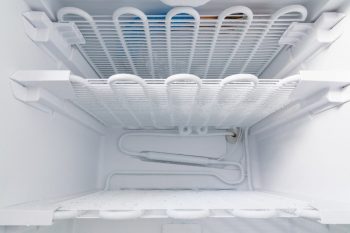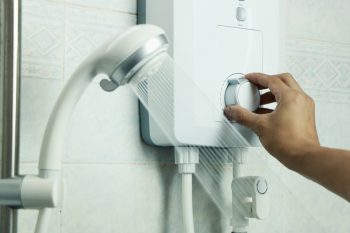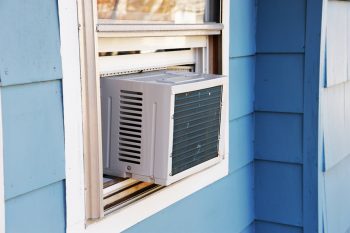
If you’ve ever wondered where all that water goes after your dishwasher has done its job, you’re not alone. Understanding the drainage system of your dishwasher is crucial to its proper functioning and maintenance. In this comprehensive guide, we’ll explain where dishwashers drain, the key components involved, common problems, and how to maintain and troubleshoot a dishwasher drain.
Dishwashers drain the water used during the wash and rinse cycles through a drain pump and drain hose. This water is then directed into your home’s drainage system. Some dishwashers may also be connected to a garbage disposal system. The drain hose carries the water from the dishwasher and discharges it into the drain pipe or garbage disposal, depending on your setup.
The Primary Function of a Dishwasher Drain
The primary function of a dishwasher drain is to remove dirty water from the dishwasher after the wash and rinse cycles. This is achieved by a drain pump, which pushes the water through the drain hose and into your home’s drainage system.
Key Components of a Dishwasher’s Drainage System
Several components contribute to the smooth operation of your dishwasher’s drainage system:
- Drain Pump: This pump removes water from the dishwasher tub during the drain portion of the wash and rinse cycles.
- Drain Hose: This hose carries the drain water from the dishwasher to the drain system.
- Check Valve: This valve prevents dirty water from flowing back into the dishwasher.
- High-limit Thermostat: This component ensures that the dishwasher does not overheat during the draining process.
- Air Gap or High Loop: These methods are used to prevent drain water from being siphoned back into the dishwasher and contaminating clean dishes or being drawn back into the fresh water supply.
- P-Trap: This plumbing component is essential for preventing sewer gases from entering the house through the dishwasher drain.
- Garbage Disposal Connection (if applicable): Some dishwashers are connected to the garbage disposal, which can affect the draining process if it is clogged.
Regular cleaning and maintenance of these components are crucial to ensure proper draining.
Common Problems with Dishwasher Drains
If your dishwasher isn’t draining correctly, it’s likely due to one of the following common problems:
- Clogged Drain Hose: Debris or food particles can sometimes clog the drain hose.
- Faulty Drain Pump: If the pump isn’t functioning correctly, it can’t pump out the water.
- Blocked Garbage Disposal: If your dishwasher is connected to a garbage disposal, a clog in the disposal can prevent the dishwasher from draining.
Cleaning and Maintenance
Experts recommend cleaning a dishwasher drain once a month for frequently-used dishwashers, or every other month for dishwashers used less than two or three times per week. Regular cleaning can help improve its efficiency and extend its lifespan.
Troubleshooting a Dishwasher Drain
If your dishwasher isn’t draining properly, try these troubleshooting steps:
- Check the Filter: Ensure the filter isn’t clogged with food or debris.
- Inspect the Drain Hose: Make sure the drain hose isn’t kinked or blocked.
- Look at the Garbage Disposal: If your dishwasher is connected to a garbage disposal, ensure it isn’t clogged.
Signs That Your Dishwasher Drain Needs Professional Repair
If you notice any of these signs, it is recommended to contact a professional appliance repair service or plumber:
- Abnormal gurgling, shaking, or thumping sounds.
- Water gurgling back up into the sink when the dishwasher drains.
- Slow-flowing drain.
- Water not pumping in or out of the dishwasher.
- Dishes not clean after a wash cycle.
- Water pooling at the bottom of the dishwasher.
- Leaking water.
DIY Solutions for a Clogged Dishwasher Drain
If you want to unclog your dishwasher drain yourself, try these methods:
- Clean the Dishwasher Filter: Remove and clean the filter thoroughly.
- Use a Baking Soda and Vinegar Solution: Mix equal parts and pour into the dishwasher.
- Check the Drain Hose: Ensure it’s securely connected and clear.
- Clean the Garbage Disposal or Sink Drain: Check for any clogs and clear them.
Always remember to turn off the power to the dishwasher and garbage disposal before attempting any DIY solutions. If these don’t resolve the issue, consult a professional plumber for further assistance.
Understanding where and how your dishwasher drains can help you maintain its efficiency and longevity. With this comprehensive guide, you’re now well-equipped to handle any dishwasher drain issues that may arise. Happy dishwashing!
Frequently Asked Questions
How often should I replace the drain hose of my dishwasher?
The lifespan of a dishwasher drain hose varies depending on use and maintenance, but generally, it should be replaced every 5-7 years. However, if you notice any signs of damage or leakage, it should be replaced immediately.
What is the role of air gap in the dishwasher’s draining system?
The air gap, or high loop, is a safety feature that prevents wastewater from the dishwasher from contaminating clean dishes or being drawn back into your home’s fresh water supply. It does this by breaking the connection between the dishwasher and the sewer line, preventing any potential backflow of water.
What can cause a dishwasher drain pump to fail?
Several factors can cause a dishwasher drain pump to fail, including a blocked or clogged pump, a faulty motor, or electrical issues. Regular maintenance and cleaning can help prevent these problems.
How can I tell if my dishwasher’s check valve is functioning correctly?
If your dishwasher’s check valve is malfunctioning, water may flow back into the dishwasher after the drain cycle. This can result in water pooling at the bottom of the dishwasher after a cycle. If you notice this issue, it’s possible that the check valve is not functioning correctly.
Can a blocked P-trap affect my dishwasher’s draining process?
Yes, a blocked P-trap can prevent water from draining out of the dishwasher properly. It can also allow sewer gases to enter your home, which can create unpleasant odors. If you suspect a blocked P-trap, it’s best to contact a professional plumber for assistance.












